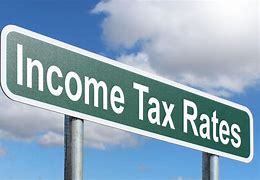
Don't know what portion of your income goes to taxes and why it doesn't match the rate in the tax table? Here are the basics of how income tax rates work.
Introduction – What is the income tax rate?
An income tax rate is the portion of your income that a government receives in taxes. In the United States, there is usually no single tax rate applied to all of your income. Still, several rates apply to different parts of your "taxable income," depending on which one remains after you claim all deductions and exemptions that you are eligible for. The number of different tax rates and income levels applied varies considerably.
Progressive tax rates
The federal government and the majority of states use a "progressive" income tax rate system. This means that with the increase in taxable income, the maximum tax rate also increases. In fiscal 2020, for example, singles with taxable income of $9,875 or less pay federal income tax at the rate of 10%. However, as your taxable income increases, you are subject to rates of 12, 22, 24, 32, 35, or 37%, and higher rates only apply to a larger portion of your income. In general, people refer to the taxable income category for each tax rate as a "tax bracket."
How does the tax bracket work?
Progressive tax rates are "marginal." This implies that each rate applies to specific portions of taxable income in a particular tax bracket or range. For instance, if you are single and have a taxable income of $175,000 in 2020, you are in the "bracket" of 32%.
However, you will not pay 32% of your total taxable income. Instead, you will pay 10% for everything up to $9,875, then 12% for the deductible up to $40,125; 22% on taxable income between $40,125 and $85,500; 24% on a value greater than $85,500 to $163,300; 32 percent over $163,300 to $207,350; 35 percent of the amount greater than $207,350 to $518,400 and the remaining 37 percent.
State income tax rate
While most states collect income taxes the same way the federal government does, some states impose a single rate of income tax on everyone, regardless of how much taxable income you earn. This is called a "flat tax."
History of income tax rates
Tax rates go up and down all the time. In 1913, shortly after the 16th Amendment to the Constitution legalized direct personal income tax, federal marginal rates ranged from 1% to 7%. To pay for huge military spending during World War II, the maximum rate rose to 94% in 1945. The maximum rate remained above 90% until the 1960s when it fell to 70%. However, by 2020, the maximum rate is 37%. The number of tax brackets has also varied considerably. In 1918, there were 56, while there were only 2 at the end of the 1980s.
Remember that a good tax professional will ask you simple questions about your life and help you with tax forms. Whether you have a complicated or simple tax situation, a tax professional such as CORE PERFORMANCE can help.
FOR MORE INFORMATION ON HOW CORE PERFORMANCE CAN BEST HELP YOU WITH YOUR TAX FILING NEEDS, PLEASE CLICK THE BLUE TAB ON THIS PAGE.
THANKS FOR VISITING.
CORE PERFORMANCE